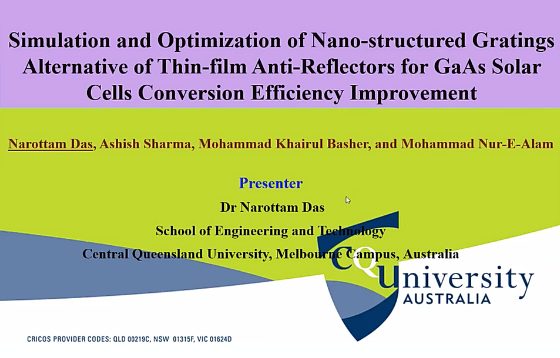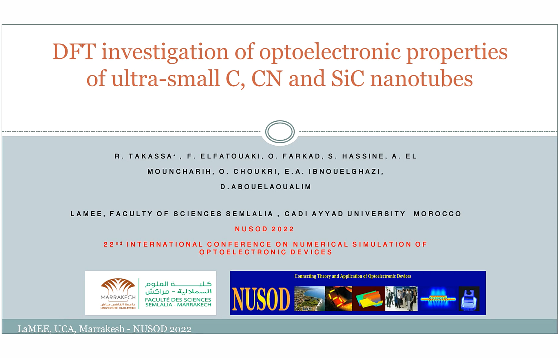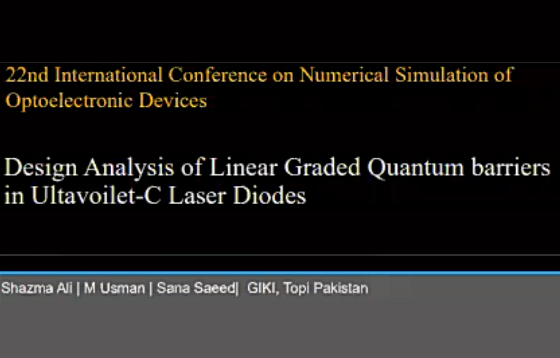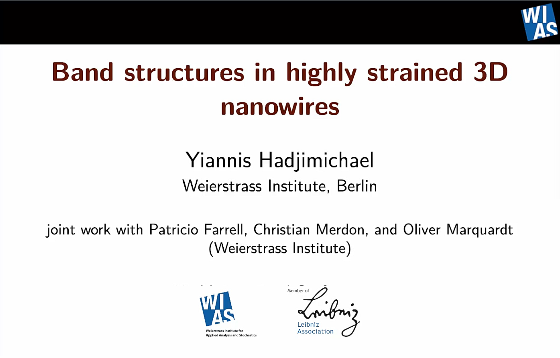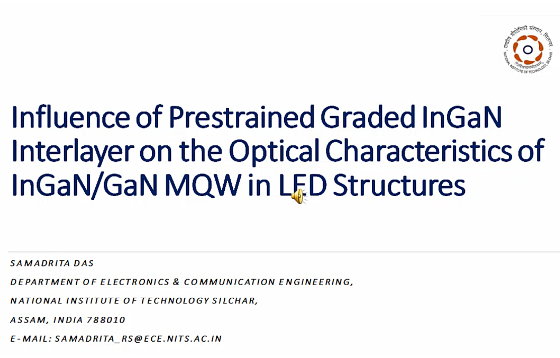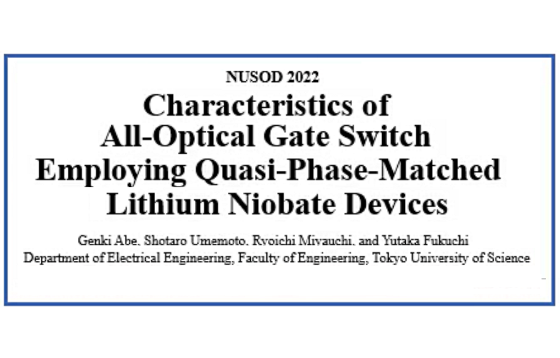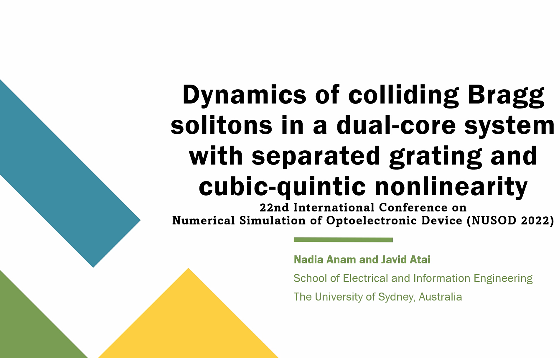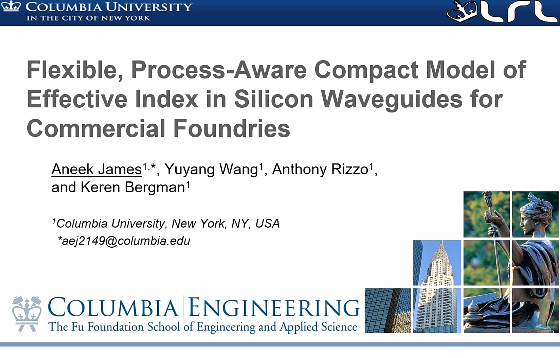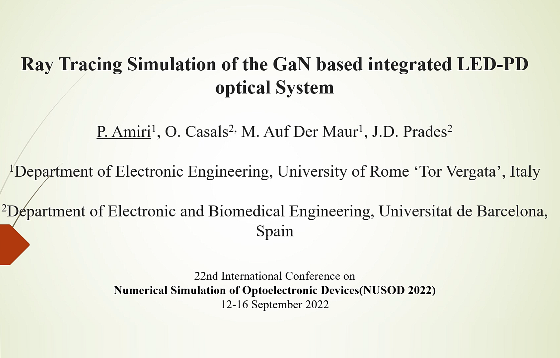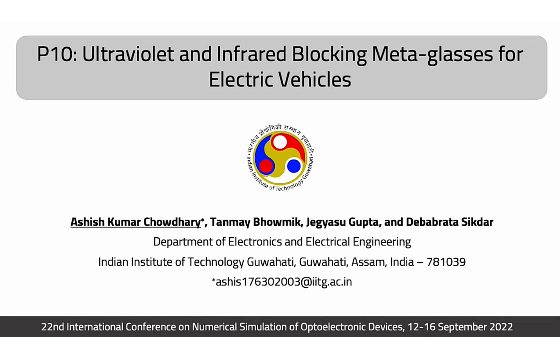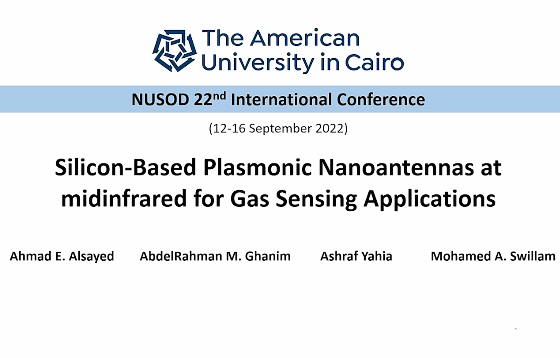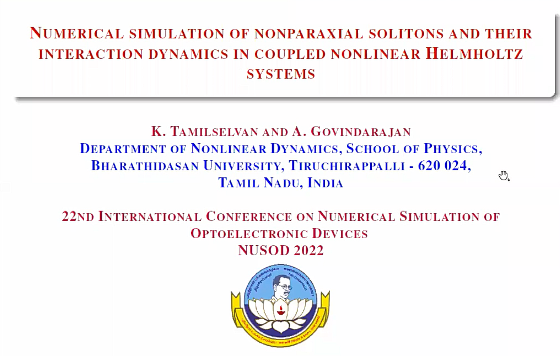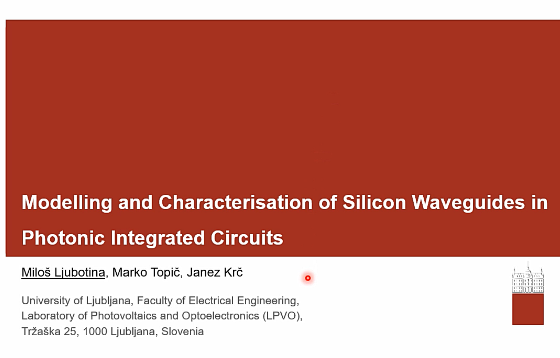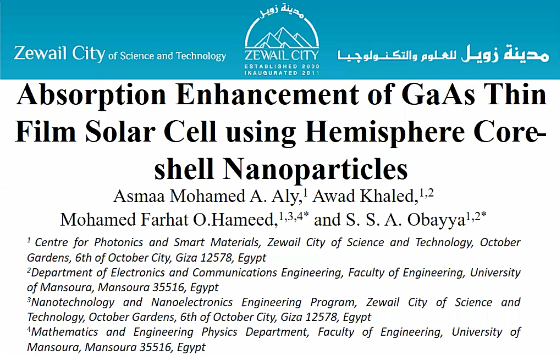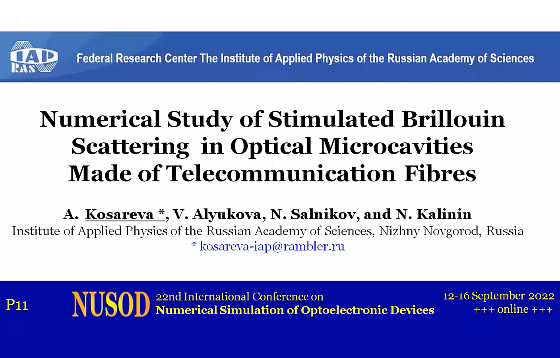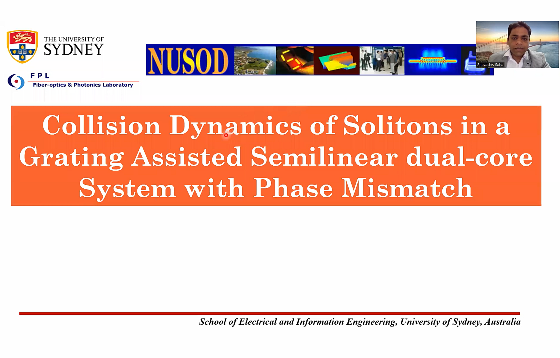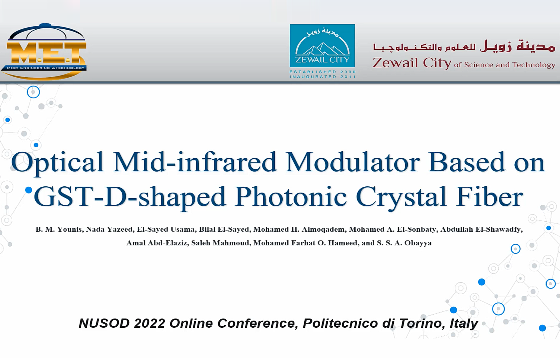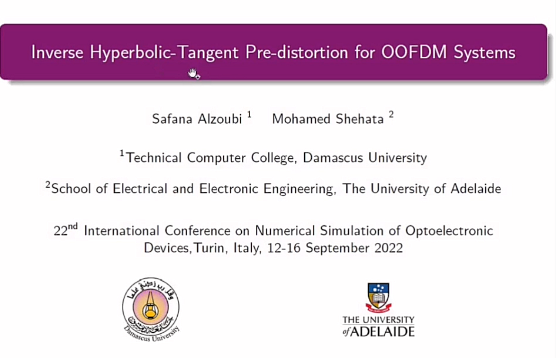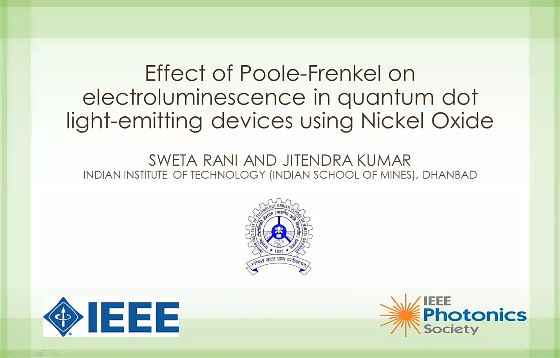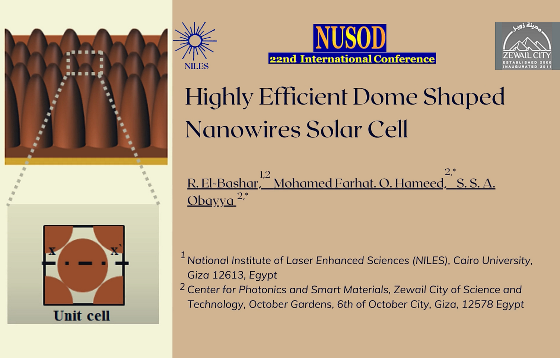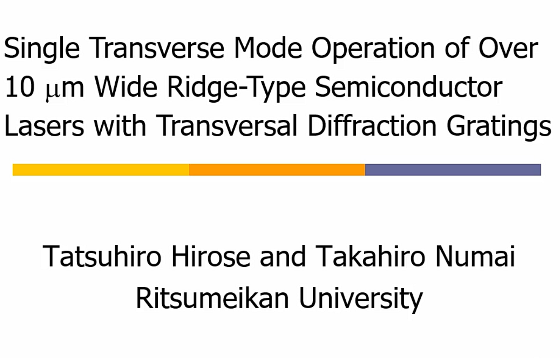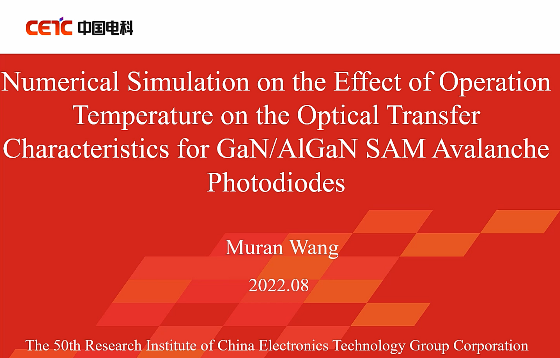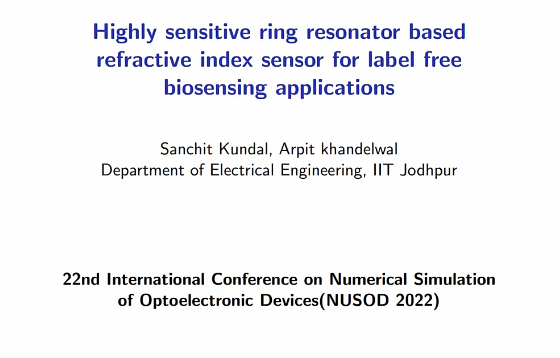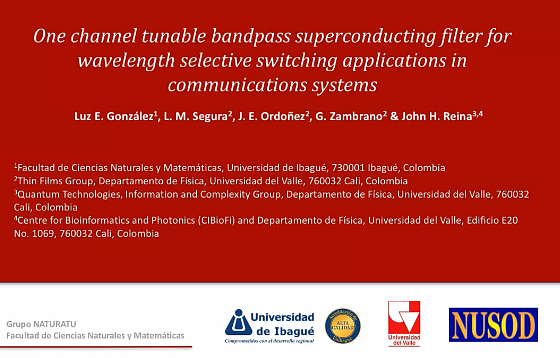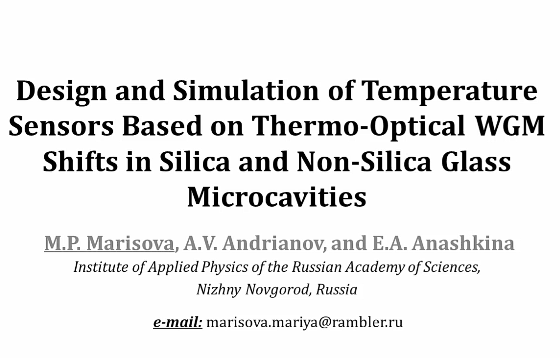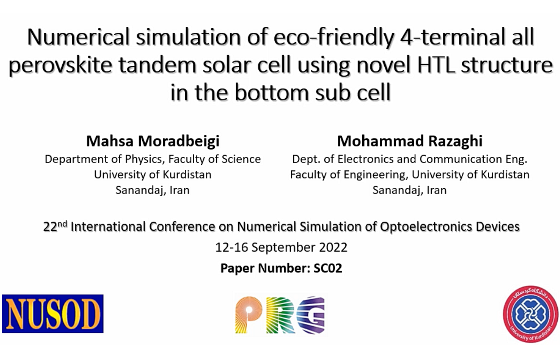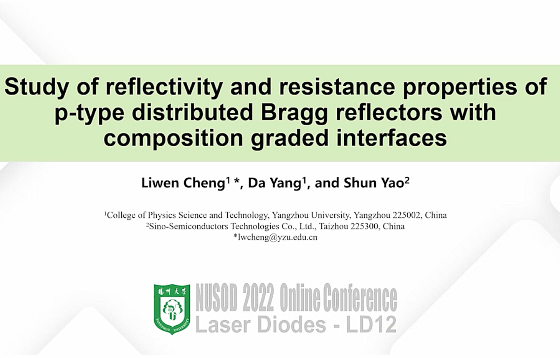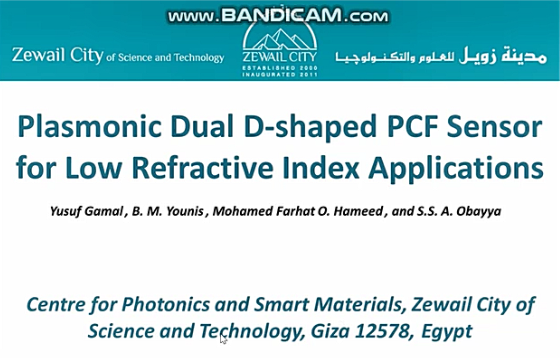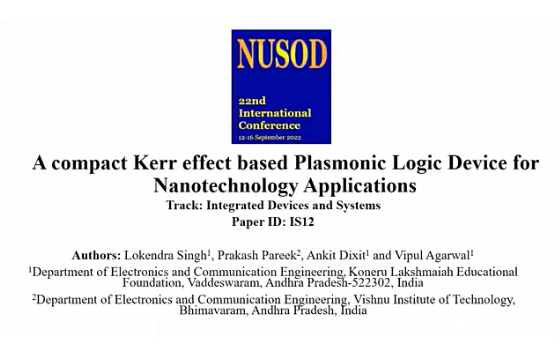Poster61 Videos



Modern civilization demands energy, and the energy demand is increasing almost every day all over the world. The dependency on conventional energy resources including fossil fuel, oil, gas, coal etc. are not in favor of having sustainable global earth. For this reason, renewable or clean energy is one only option while acquiring energy from the […]
N07 – DFT investigation of optoelectronic properties of ultra-small C, CN and SiC nanotubes
We investigated the optoelectronic properties of ultra-small armchair (3,3) carbon (C), carbon nitride (CN) and silicon cabride (SiC) nanotubes using the density functional theory (DFT). We performed the calculations for two potentials Perdew-Burke-Ernzerhof Generalized Gradient Approximation (PBEGGA) and Tran-Blaha modified Becke-Johnson (TB-mBJ) potential. The results show a semiconducting nature with direct and indirect gap for […]
LD15 – Design Analysis of Linear Graded Quantum barriers in Ultravoilet-C Laser Diodes
We demonstrated ultraviolet laser diode with improved optical and electrical features. By employing linear graded rising aluminium concentration in phases from first quantum barrier to last quantum barrier, the suggested LD design improves internal quantum efficiency (IQE) and output power while minimizing the lasing threshold. The proposed LD increases optical gain while lowering carrier leakage […]
N03 – Band structures in highly strained 3D nanowires
We mathematically derive a new nonlinear strain model to simulate the conduction and valence bands in highly bent 3D hexagonal nanowires with GaAs core and asymmetric (AlαIn1-α)As stressor. The model is based on a transformation of the 1st Piola-Kirchhoff stress tensor and an appropriate energy functional that captures the dynamics of the induced strain due […]
LED08 – Influence of Prestrained Graded InGaN interlayer on the Optical Characteristics of InGaN/GaN MQW-based LEDs
In this work, an InGaN/GaN multi-quantum well light emitting diode is designed with different kinds of prestrain layers (InGaN) inserted between the active region and n-GaN layer to demonstrate the effects of piezoelectric polarization on GaN-based LEDs. The device describes a GaN buffer layer which promotes charge injection by minimizing energy barrier between electrode and […]
IS06 – Characteristics of All-Optical Gate Switch Employing Quasi-Phase-Matched Lithium Niobate Devices
We analyze characteristics of all-optical switches using the cascade of second harmonic generation and difference frequency mixing in quasi-phase-matched lithium niobate devices. Numerical calculations consider not only the pulse waveforms but also the optical noises.
P22 – Dynamics of colliding Bragg solitons in a dual-core system with separated grating and cubic-quintic nonlinearity
We investigate the collisions of counterpropagating Bragg solitons in a dual-core optical coupler where one core has cubic-quintic nonlinearity and is coupled to another linear core equipped with a uniform Bragg grating. The outcomes of the collisions are diverse and exhibit rich dynamics.
P06 – Flexible, Process-Aware Compact Model of Effective Index in Silicon Waveguides for Commercial Foundries
We report the performance of a compact model for the effective index of SOI wire waveguides, showing exceptional agreement with simulated effective index and confinement factors. The development of such a model represents a potential pathway toward better modeling of silicon photonic devices in commercial foundry processes.
LED06 – Ray Tracing Simulation of a GaN-based integrated LED-Photodetector System
An optical sensor system consisting of a pair of GaN LED and Photodetector (PD) is simulated using COMSOL Multiphysics, and the possibility of using this system as absorption coefficient sensor is studied. By locating both LED and PD on a same substrate and measuring transmitted power to the PD, it would be possible to sense […]
P10 – Ultraviolet and Infrared Blocking Meta-glasses for Electric Vehicles
The air-conditioning systems installed in electric vehicles (EVs) consume a significant portion of battery power, thus, limiting EVs’ operating mileage. A design of an automobile windshield that can passively control the heat and light transmitted through it, could improve EV’s performance by reducing the need for air-conditioning. Here, we present a ‘meta-glass’ coating design that […]
D04 – Numerical simulation on the dependence of photoresponse on the thickness of the charge layer for GaN SAM avalanche photodiodes
GaN avalanche photodiode (APD) has important application prospects in the field of solar-blind ultraviolet (UV) detections. The back-illuminated GaN-based detector has been widely studied due to the advantages such as easy integration with readout circuit. Numerical model of GaN APD is established. The influence of the key function layer (charge layer) thickness on the device […]
NM08 – Silicon-Based Plasmonic Nanoantennas at midinfrared for Gas Sensing Applications
Advanced nanotechnology especially CMOS technology- enables us to re-design the classic antenna in the nanoscale, which can convert propagating optical wavelengths instead of radio and microwave wavelengths into localized energy and vice versa. As a result, sensors may be designed to make sensing molecules with their characteristic vibrational transitions easier. Bowtie silicon nanoantennas are investigated […]
N06 – Numerical simulations of nonparaxial solitons and their interaction dynamics in coupled Helmholtz systems
The role of nonparaxiality provides a fertile ground for fabricating miniaturized nanoscale devices. In this work, we examine the existence of nonparaxial solitons in a dimensionless coupled nonlinear Helmholtz system, allowing the propagation of ultra-broad nonparaxial pulses in a birefringent optical waveguide. We analytically obtain a bright soltion solution by using standard Hirota’s bilinearization method. […]
IS10 – Modelling and Characterisation of Silicon Waveguides in Photonic Integrated Circuits
Modelling and characterization of basic waveguiding structures in integrated photonics is important due to the large variety of established and emerging technologies used for fabrication. In this contribution we present a modelling and characterization approach for integrated silicon waveguides. We provide waveguide characteristics calculated from eigenmode simulation and optical measurement results.
SC06 – Absorption Enhancement of GaAs Thin Film Solar Cell using Hemisphere Core-shell Nanoparticles
A novel design of GaAs solar cell (SC) is proposed and analyzed. Hemisphere core shell structures are placed over the surface of the SC to harvest more energy and increase the solar cell efficiency. The GaAs and GaSb are used as core/shell materials to increase the wavelength coupling between the dual cores of the proposed […]
P11 – Numerical Study of Stimulated Brillouin Scattering in Optical Microcavities Made of Telecommunication Fibres
We numerically studied stimulated Brillouin scattering processes up to the 5th order is microcavities with various realistic diameters and Q-factors made of standard telecommunication fibres. Pump power thresholds were simulated for different parameters of the system. The larger the microcavity and lower Q-factors, the higher pump power thresholds are. It is also shown that thresholds […]
IS09 – Collision Dynamics of Solitons in a Grating Assisted Semilinear dual-core System with Phase Mismatch
The collision dynamics between two counterpropagating moving Bragg grating solitons and their outcomes in a model of semilinear dual-core Bragg-grating coupler with phase mismatch are investigated. The influence of gratings phase mismatch on the collision outcomes is also discussed.
NM14-Mid-infrared optical modulator based on D-shaped PCF
Recently, photonic crystal fibers (PCFs) have become of compelling interest due to their diverse applications, especially in the mid-infrared (mid-IR) wavelength regime. In this work, an optical mid-IR modulator based on D-shaped PCF with germanium-antimony-tellurium (GST) as a phase-changing material (PCM) is presented and analyzed. Because of the phase transition of the GST material between […]
IS15 – Inverse Hyperbolic-Tangent Pre-distortion for OOFDM Systems
We propose an inverse hyperbolic-tangent-based digital pre-distorter that can suppress the Mach-Zehnder modulator-induced harmonic distortions by about 13 dB for single-tone signals, while maintaining the peak-to-average power ratio in optical orthogonal frequency division multiplexed signals.
N05 – Effect of Poole-Frenkel emission on electroluminescence in quantum dot light emitting devices with Nickel Oxide layer
Theoretical analysis of hybrid quantum dot-light emitting devices incorporating CdSe/ZnS core/shell quantum dots and Nickel Oxide (NiO) as hole injection layer (HIL) has been carried out in this work. The replacement of organic HIL such as poly(3,4-ethylenedioxythiophene):poly(styrenesulfonate) (PEDOT:PSS) with solution-processed NiO layer has led to enhancement of current density and luminance in the device by […]
SC05 – Highly Efficient Dome Shaped Nanowires Solar Cell
The optical characteristics of Si dome-tapered nanowires (NWs) solar cell (SC) are reported and analyzed by using finite difference time domain method. The geometrical parameters are studied to maximize the light absorption and hence the ultimate efficiency and short circuit current density of the reported NWs SC. The dome-shaped NWs show better absorption enhancement than […]
LD11 – Single Transverse Mode Operation of Over 10 µm Wide Ridge-Type Semiconductor Lasers with Transversal Diffraction Gratings Tatsuhiro Hirose and Takahiro Numai
This paper reports on single transverse mode operation of a ridge-type semiconductor laser with transversal diffraction gratings for a mesa width over 10 µm when the number of periods is 160, the grating pitch is 428.7 nm, and the grating depth is 250 nm.
D08 – Numerical Simulation on the Effect of Operation Temperature on the Optical Transfer Characteristics for GaN/AlGaN SAM Avalanche Photodiodes
GaN/AlGaN avalanche photodiodes (APDs) have important application values and broad application potentials in the field of solar-blind ultraviolet (UV) detection. However, the self-heating effect has an obvious influence on the output characteristics of GaN/AlGaN APDs. In order to study the influence of self-heating temperature on its performance, the numerical model of GaN/AlGaN APDs is established […]
NM13-Highly sensitive ring resonator based refractive index sensor for label free biosensing applications
Ring resonator based label free refractive index biosensor is proposed for detecting glucose and hemoglobin concentrations. To improve device sensitivity and Q factor, various parameters of ring resonator are optimized. The designed ring resonator sensor can sense hemoglobin and glucose concentrations with a high sensitivity of 424 nm/RIU and Q factor of 802.
NM10 – One channel tunable bandpass superconducting filter for wavelength selective switching applications in communications systems
We design and evaluate the performance of optical filters that are built from one-dimensional photonic crystals (PhCs) amenable for integration into optical networks based on wavelength division multiplexing (WDM). The photonic heterostructures comprise the integration of a ferroelectric (BaTiO3), a dielectric (Y2O3), and a critical high-temperature superconductor material (YBa2Cu3O7−X) in between. Such nanosystems can allow […]
P12 – Design and Simulation of Temperature Sensors Based on Thermo-Optical WGM Shifts in Silica and Non-Silica Glass Microcavities
Sensing applications of dielectric microcavities with whispering-gallery modes (WGMs) have been actively studied in the recent years. Here we investigated theoretically temperature microsensors based on different glasses, including common silica glass, as well as special germanate, tungsten-tellurite, arsenic sulfide and arsenic selenide glasses. We developed numerical model describing sensing characteristics of the considered microcavities. We […]
SC02 – Numerical simulation of eco-friendly 4-terminal all perovskite tandem solar cell using novel HTL structure in the bottom sub cell
In this paper, we proposed a free-pb 4-terminal (4T) all perovskite tandem solar cell (APTSC) as reference with the power conversion efficiency (PCE) of 26.42% . First, a 100 nm MgF2 thin film is used as an antireflection layer (ARL) of the top sub cell to improve the total PCE of the reference structure. The […]
LD12 – Study of reflectivity and resistance properties of p-type distributed Bragg reflectors with composition graded interfaces
In this work, the reflectivity and series resistance of the p-type distributed Bragg reflectors (DBRs) in vertical cavity surface emitting lasers (VCSELs) under the different thickness of composition graded interface layers, Al composition of the high Al composition layers, Al composition of the low Al composition layers, and the number of DBR periods are simulated […]
P16 – Plasmonic Dual D-shaped PCF Sensor for Low Refractive Index Applications
Dual D-shaped (DD-shaped) plasmonic photonic crystal fiber (PCF) for refractive index sensing is designed and analyzed. In the proposed design, two gold nano-rods are attached to the two etched surfaces of the PCF to enhance the sensing characteristics. The surface plasmon (SP) modes excited at the metal/dielectric interfaces are strongly coupled to the PCF core […]
IS12 – A compact Kerr effect based Plasmonic Logic Device for Nanotechnology Applications
This work utilizes the vital property of Kerr effect of altering the phase of optical signal to numerically investigate the plasmonic XOR/XNOR logic device for nanotechnology applications. Extinction ratio (ER) and insertion loss (IL) of basic switching element (Mach-Zehnder interferometer) is evaluated and plotted as a function of length of interferometric arms. The obtained result […]

